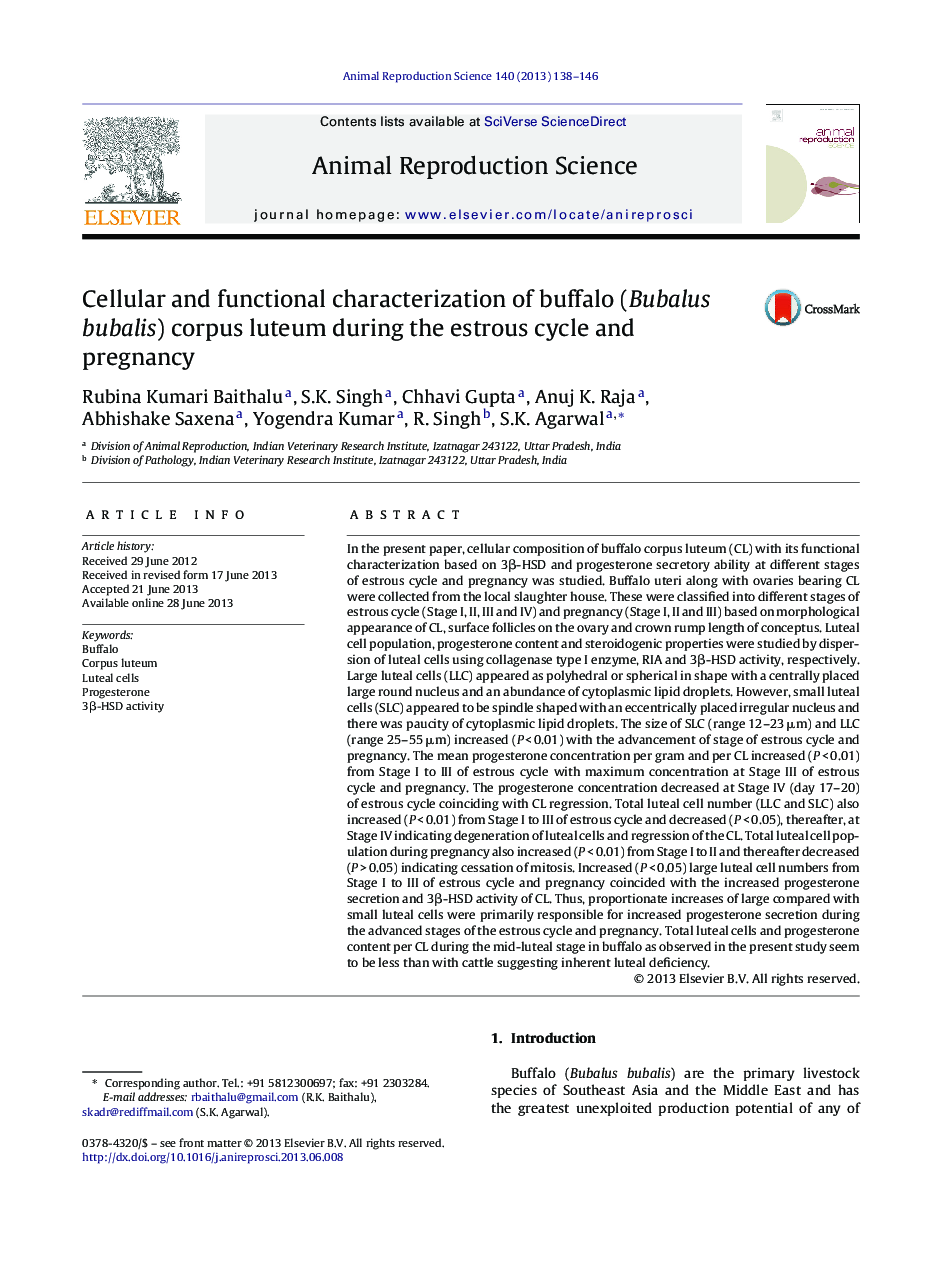| کد مقاله | کد نشریه | سال انتشار | مقاله انگلیسی | نسخه تمام متن |
|---|---|---|---|---|
| 2072949 | 1544747 | 2013 | 9 صفحه PDF | دانلود رایگان |

In the present paper, cellular composition of buffalo corpus luteum (CL) with its functional characterization based on 3β-HSD and progesterone secretory ability at different stages of estrous cycle and pregnancy was studied. Buffalo uteri along with ovaries bearing CL were collected from the local slaughter house. These were classified into different stages of estrous cycle (Stage I, II, III and IV) and pregnancy (Stage I, II and III) based on morphological appearance of CL, surface follicles on the ovary and crown rump length of conceptus. Luteal cell population, progesterone content and steroidogenic properties were studied by dispersion of luteal cells using collagenase type I enzyme, RIA and 3β-HSD activity, respectively. Large luteal cells (LLC) appeared as polyhedral or spherical in shape with a centrally placed large round nucleus and an abundance of cytoplasmic lipid droplets. However, small luteal cells (SLC) appeared to be spindle shaped with an eccentrically placed irregular nucleus and there was paucity of cytoplasmic lipid droplets. The size of SLC (range 12–23 μm) and LLC (range 25–55 μm) increased (P < 0.01) with the advancement of stage of estrous cycle and pregnancy. The mean progesterone concentration per gram and per CL increased (P < 0.01) from Stage I to III of estrous cycle with maximum concentration at Stage III of estrous cycle and pregnancy. The progesterone concentration decreased at Stage IV (day 17–20) of estrous cycle coinciding with CL regression. Total luteal cell number (LLC and SLC) also increased (P < 0.01) from Stage I to III of estrous cycle and decreased (P < 0.05), thereafter, at Stage IV indicating degeneration of luteal cells and regression of the CL. Total luteal cell population during pregnancy also increased (P < 0.01) from Stage I to II and thereafter decreased (P > 0.05) indicating cessation of mitosis. Increased (P < 0.05) large luteal cell numbers from Stage I to III of estrous cycle and pregnancy coincided with the increased progesterone secretion and 3β-HSD activity of CL. Thus, proportionate increases of large compared with small luteal cells were primarily responsible for increased progesterone secretion during the advanced stages of the estrous cycle and pregnancy. Total luteal cells and progesterone content per CL during the mid-luteal stage in buffalo as observed in the present study seem to be less than with cattle suggesting inherent luteal deficiency.
Journal: Animal Reproduction Science - Volume 140, Issues 3–4, August 2013, Pages 138–146